Chasing the Mystic: An interview with painter John Finneran
Art — 11.08.16
Words: Molly Taylor
All works courtesy of Arcade, London
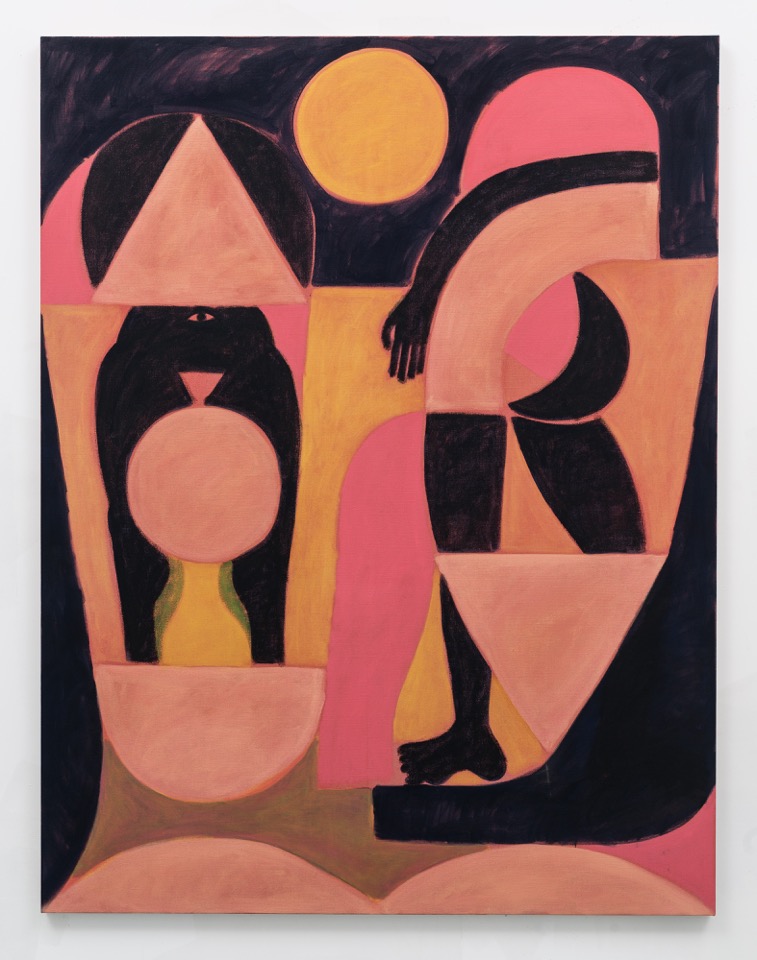
Dreamer Dreaming Day And Night (2016), oil and crayon on linen
Your works have distinct colour palettes: dusty pinks, deep blues, and a striking use of black. How did this signature develop?
I both hate and love when artists go on about this… but I have synesthesia. I have a range of physical sensations tied to these specific colors and their interaction. It’s another way of saying that I’m just wired for these colors. In the past, I’ve tried to have a more inclusive relationship to color. I prefer the more physical and genuine connection I have to these few specific colors.
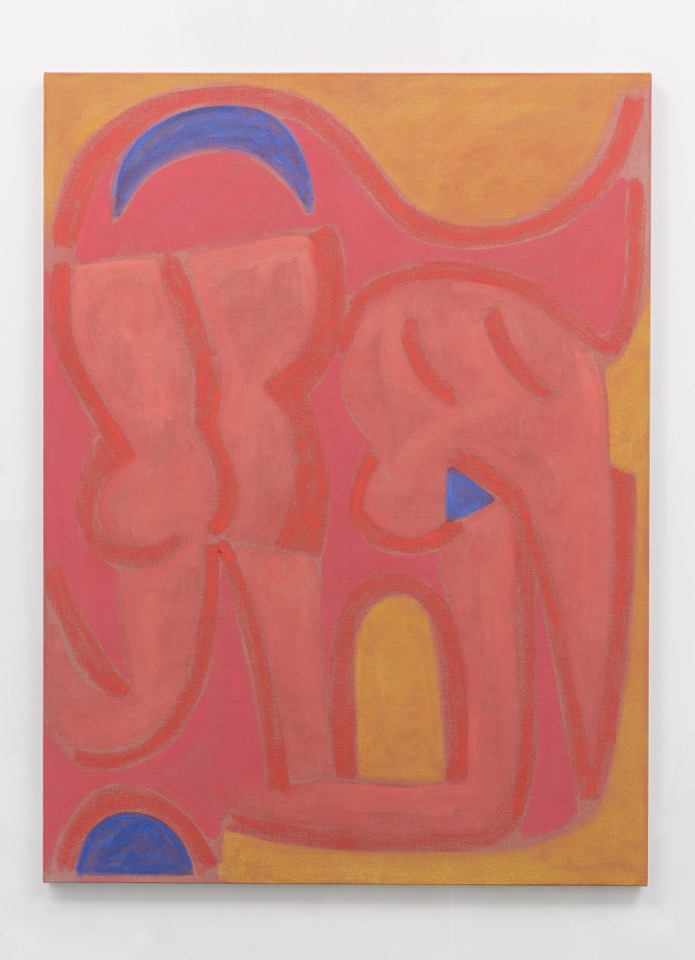
Day (2016), oil and crayon on linen
It seems as though the human body – especially the female body – is important to you.
I think about this a lot, especially lately as I’ve wanted to see the drawing evolve in my work. I started painting symbols connected to the body first: eyes and noses and mouths. As I got deeper into those paintings I realized I was heading towards the challenge of looking at a whole figure. Like how was I going to go from looking at a one-on-one type of interaction with a symbol to looking at a group, usually 3 figures, interacting? At first, I did paint men and women, but I found that the men all came out looking like me and that didn’t satisfy me. It wasn’t the subject I was looking for. I wanted to search for a way of looking at the interaction between the self and another, not myself and myself. So the most natural way to make it clear that it wasn’t me was to paint women. Now years later I’m looking more closely at what the implications of that binary are. I’m pushing the figures to be more gender neutral.
I’m trying to get to a place where I can make room for emotional interaction. Within the relationship between men and women in painting, there is a whole lot more subject matter that I’m not necessarily interested in. I’ve felt that people who spend time with my work can sense that I’m interested in a platonic, emotional space. It’s, of course, very connected to physicality, posture, and the body in the way that informs emotion. I think deeply about whether I’m reaching that subject. I feel a responsibility to interrogate my work and be honest about what’s there.
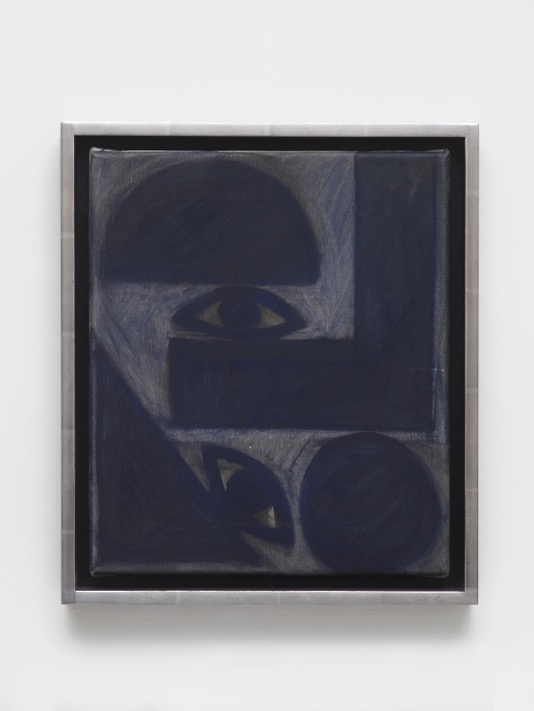
Eyes (2016)
I’m curious about the mystical elements in your work, particularly the recurring motif of the eye and the many titles that refer to ‘spirits’. Can you tell us about these?
I think searching for a mysterious place like the eye, or whichever place spirits are, makes me feel more open. At work, I’m mostly pushing myself to be in a place where I don’t have any answers. Hopefully to learn something about what I’m feeling, or to see what I’m doing without judging it simultaneously. I love that disarming feeling of concentrating on your own eye in the mirror or looking directly into someone else’s eyes. I’m interested in the mysticism of not knowing anything.
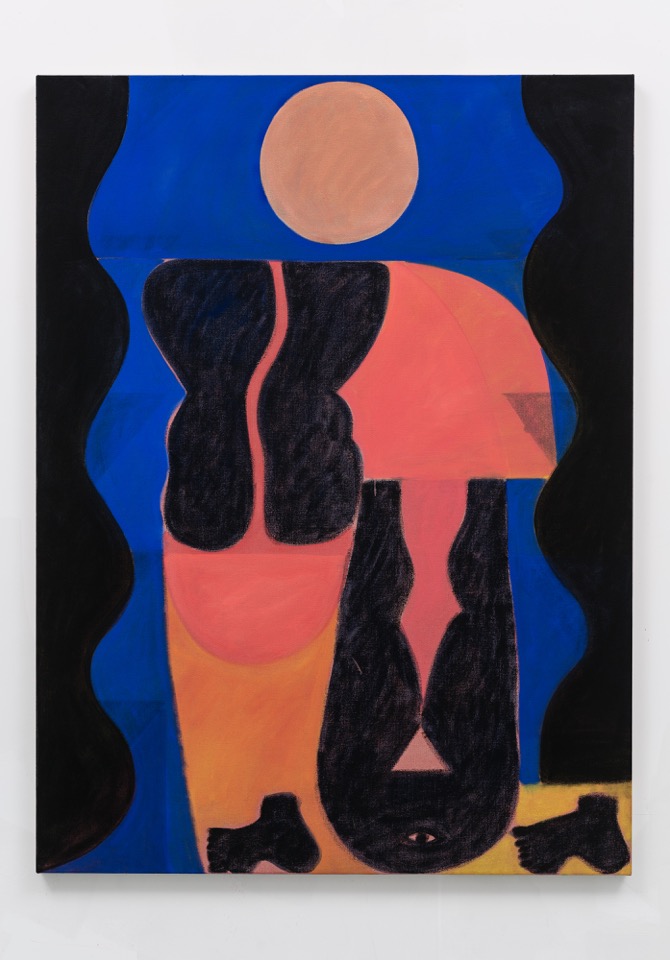
Waiting At Night (2016), oil and crayon on linen
Some of your paintings are reminiscent of Egyptian hieroglyphs: bodies in rows, suns, gods – that type of thing. Are you interested in this period of history?
I wonder a lot where that comes from. I’m sure I went the Met in NY to see the mummies and stuff when I was little. I assume that deep in there I’m drawing on those memories. The way I understand it is that I’m just going back to an image I have in my mind that doesn’t have too many analytical thoughts attached to it. As if you ask yourself a question like, ‘what painting did I see before I knew the word painting?’ But really, I don’t know! I said to myself: paint a woman as simply as you can without thinking, and this is what came out. I prefer to leave it mostly as it is. I think you can change the application and intention of the images that form the core of your memories but the images themselves are more are less set. My work is formed out of those images. And it’s incredibly fun for me to rearrange them, look at them, and wonder what I meant when I absorbed them.
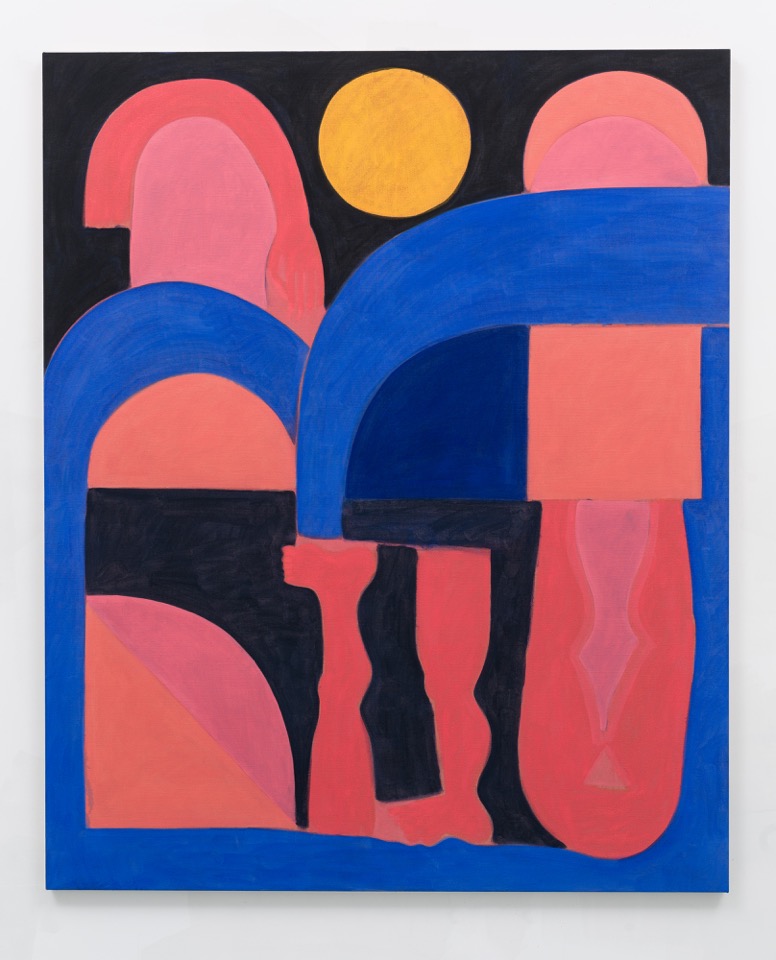
The Home Where I’m Found (Ocean) (2016), oil and crayon on linen
What would you say the mood of your paintings are? Even though many of them depict fragmented bodies and are actualised in intense colours, a lot of them seem to possess (for me at least) a deep, radiating calm.
I hope so! I think everything I do, the repetition, the glowing colors, the returning posture of the figures is pointing towards a kind of calm. It’s very difficult to see things clearly but it’s a dream of mine, I think that’s what I’m working on.
You can see recent works of John Finneran at Arcade, London.